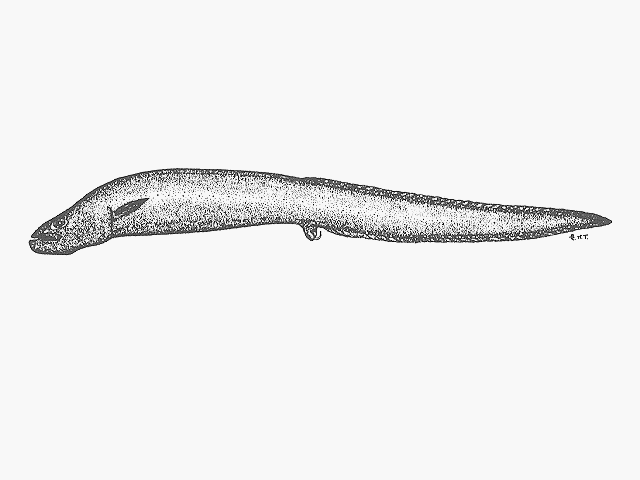| Bythitidae (Livebearing brotulas) |
| 5.4 cm SL (male/unsexed) |
|
bathypelagic; marine; depth range 0 - 3000 m |
| Northeast Atlantic: most of the known specimens from the area (Ref. 36126). Eastern Atlantic: Gulf of Guinea, one specimen 0°42'S, 7°E (Ref. 10800). Southeast Atlantic: off East London, South Africa. Western Pacific: Japan and Australia (Ref. 11228). |
|
Dorsal spines (total): 0-0; Dorsal soft rays (total): 37-41; Anal spines: 0-0; Anal soft rays: 34-38. Body long, naked and compressed. Skin loose, thin but not gelatinous. Snout pointed. Gill opening large. Head and body uniformly dark brown in alcohol (Ref. 35852). |
| Found on the continental slope (Ref. 75154). Viviparous (Ref. 10800). Minimum depth from Ref. 58018. |
|
Least Concern (LC); Date assessed: 14 July 2014 Ref. (130435)
|
| harmless |
Source and more info: www.fishbase.org. For personal, classroom, and other internal use only. Not for publication.

